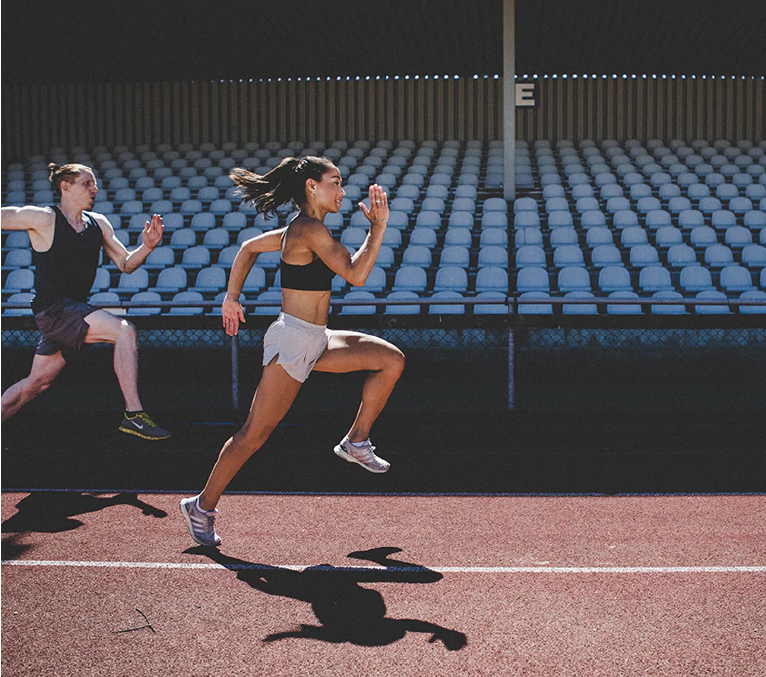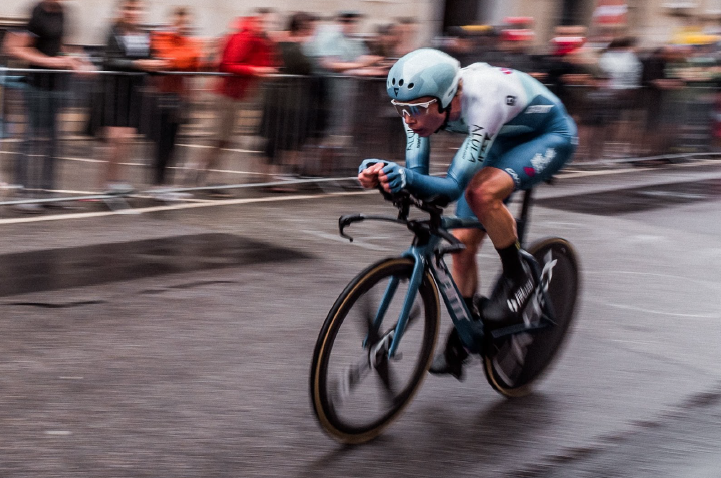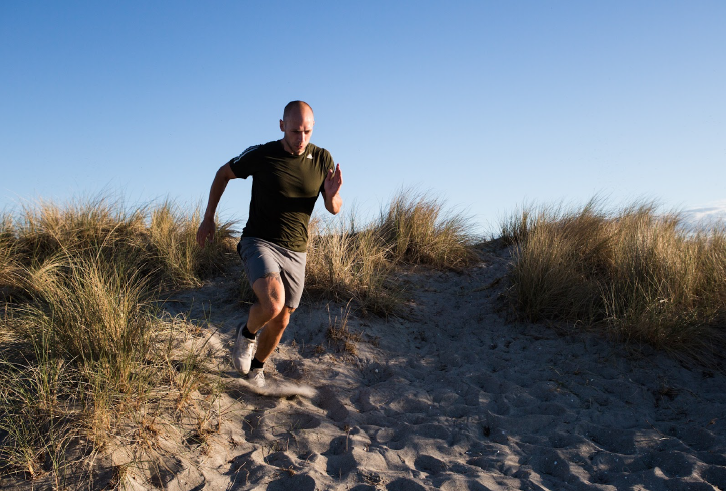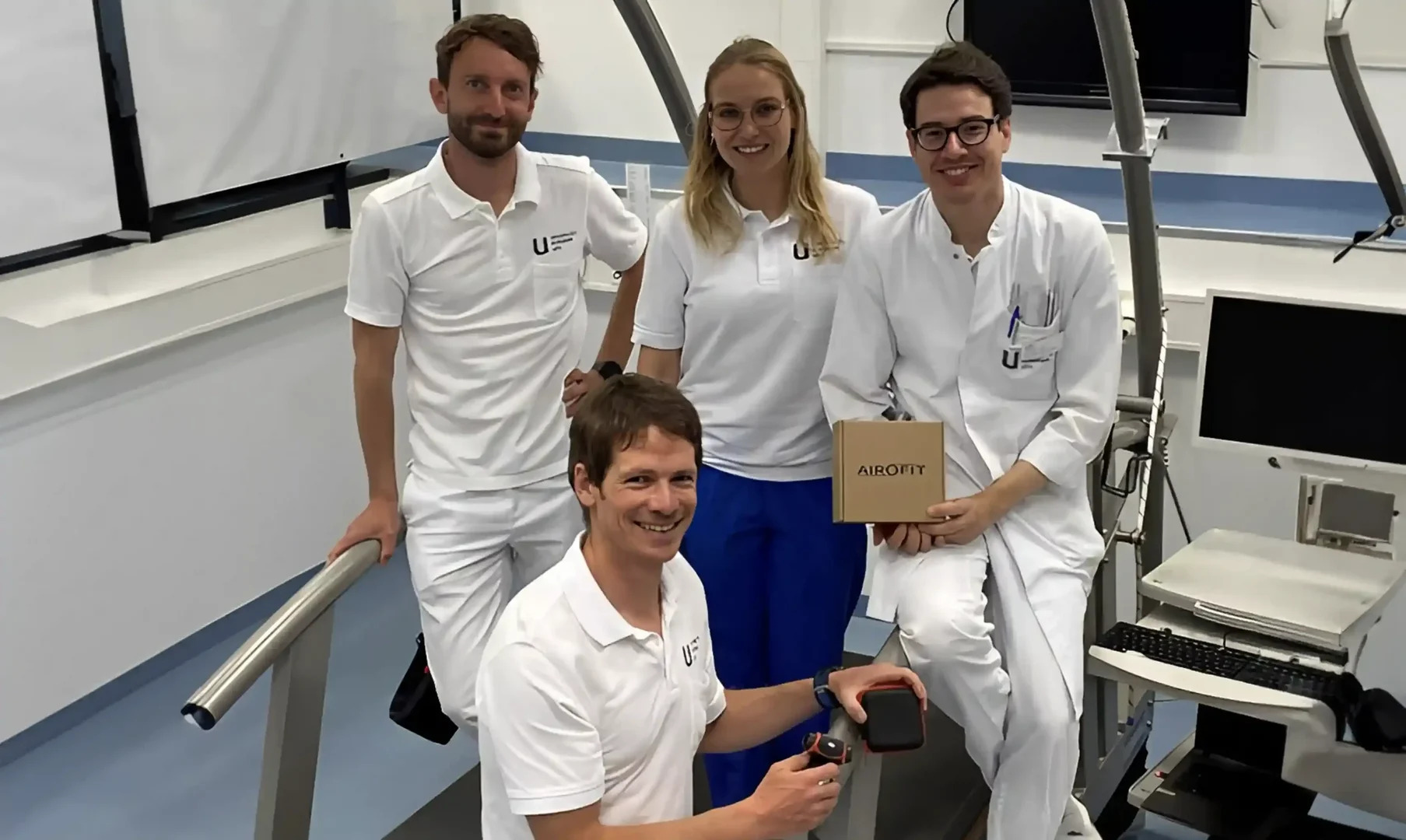- 3 min read
- September 23, 2022
Breathing for sprint sports

You’re in the blocks, waiting for the start. Adrenaline is coursing through your body, as you wait to explode into action. You’ve trained hard. Visualized the win a thousand times, crossing the finishing line and the crowd going wild. It all comes down to the next few seconds.
Sprinting is a uniquely demanding activity that pushes the heart, lungs and muscles to their limit.
But it’s not just about your body. Focus, heart, self-belief. And then you’re out of blocks and sprinting for all you’re worth.
During a single short sprint, like the 100 meters, most of the energy required is provided independently of available oxygen – so called anaerobic metabolism.
But on longer or repeated sprints, the ability of the respiratory system to supply oxygenated blood to the muscles becomes crucial and the efficiency of the lungs and breathing muscles becomes a major factor in performance.
The metaboreflex will also be a potentially limiting factor.
This is why breathing muscle strength, resistance to fatigue and fast recovery are factors that any serious athlete must consider.
The main proven benefits of respiratory muscle training (RMT) across manysports can be summarized as follows:
- Makes exercise feel easier
- Makes training more enjoyable
- Train harder for the same effort
- Train longer for the same effort
- Evidence-based improvement in performance
In sprint events, one of the key goals of training will be to ensure there are no weak links in the power supply chain. Good nutrition, focus and all the countless hours of training are put to the test in a very short timeframe. So, every sprinter wants to ensure their lungs and breathing muscles are performing at optimal levels.
RMT has been shown to improve inspiratory muscle strength by up to 45%
and Improves inspiratory muscle power by 64%.
Until quite recently, training the respiratory system effectively was a bit hit and miss. Resistance training was crude and difficult to quantify. (Ever tried breathing through a straw?).
But with the rapid advances in sports and health technology, it’s now both possible and straightforward to test, train and collect data within one simple training system.
Breathe better, sprint better

The expert’s view is that deep diaphragmatic breathing helps to expand the ribcage and assists the thoracic spine’s rotation as you take each step.
It also helps the transfer of energy from the arm movements, and torse to the legs. This means increased power output and faster sprints.
The ideal breathing pattern is deep breaths, via the mouth and timed for the distance / pace you will run.
Typically, in the short or medium sprints, athletes will aim for a 2:2 pattern, of breathing in for 2 steps and then breathing out on the next 2 steps.
On longer runs the breathing pattern might be changed to a slower 3: 3 or 4:4pattern.
In other sports, like cycling, competitors have their own unique challenges to
breathe optimally (https://www.youtube.com/watch?v=INtJUII8EQ4)
for peak performance. The bent-over posture and tense upper body of the cyclist in competition makes effective breathing more of a challenge, and every good cycling coach will work to ensure their riders are aware of best practice, and use proper breathing techniques and training systems.
In summary
- You should be taking deep breaths through the mouth
- Your stomach should expand with each breath
- Your ribcage should be able to move freely with each stride
- The rhythm of your breathing pattern should match the rate of your steps
The habits of elite sprinters

All those long, hard hours of training are crucial to success. But what gives a sprinter the edge? Is it mindset, good genes or divine intervention?
“The mind is absolutely instrumental in achieving results, even for athletes. Sports psychology is a very small part, but it’s extremely important when you’re winning and losing races by hundredths and even thousandths of a second.”
Michael Johnson
Undoubtedly, having the right physiology for sprinting makes a difference, and your genetic inheritance is beyond your control. Ditto for any supernatural assistance.
But the factors that can make all the difference are available to most athletes:
- Find a good coach and place your trust in their advice and feedback
- Train all the muscles crucial to success, including those you can’t see – the diaphragm and intercostals that power your breathing
- Prioritize rest and recovery routines, also crucial to success
- Cultivate the winners mindset – visualization, positive self-talk, grit
- Learn from your failures – progress in any sphere is often about your attitude and how you respond to setbacks
Sprinting sports may offer a fast, exciting adrenaline rush. But it’s the slow, careful preparation, battling through failures and injuries, that is where winners learn to harness all their physical and mental faculties in pursuit of that moment of glory.



